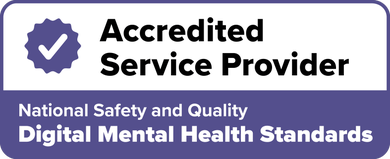Teenagers and Mental Health: Dealing with Teenager Stereotypes
Australian teens are in crisis. Mental health disorders among young people have almost doubled in the past 15 years, overwhelming the health system. Social media, family breakdowns, and school pressures all contribute to this phenomenon.
Another factor is teenager stereotypes. These cognitive generalisations help us make quick judgements about an individual based on the perceived behaviours of a group. Often, these stereotypes are harmful. Some groups may be perceived as more violent or less intelligent. Others may seem positive but can end up placing an unfair burden on young people’s shoulders.
Confronting these stereotypes among teenagers is one aspect of solving the teen mental health crisis. That’s especially true given the viral spread of stereotypes online and on social media.

Table of contents
What is a Stereotype?
Stereotypes are generalisations about a group based on perceived characteristics. Sometimes, they’re just a light-hearted bit of fun. Brits have a stiff upper lip and a penchant for bowler hats, or Aussies are obsessed with shrimps on the barbie.
Teenager stereotypes are a little more harmful. When a young person feels pigeon-holed so early on, it can feel extremely claustrophobic. Their identity is distilled down into a blanket statement. Even worse, if the person begins to fear, the stereotype might be true.
These stereotypes often involve a person’s race, ethnicity, gender, or cultural group. What might seem harmless can have devasting effects. “I cannot do activity [X] that’s for [white/black/brown] people.” When we buy into the stereotype, we limit ourselves – both in terms of the activities we engage with but also our potential as people.
“As adults, it’s easy to dismiss this as nonsense. But to teenagers, everything can feel deathly serious. We call them our “formative years” for a reason.
”
Teenager Stereotypes and Cliques
We’ve all seen American movies where teenagers are sorted into “cliques.” There are the cool kids, the artsy kids, the nerds, the goths, and on it goes. Life in Australian schools isn’t so cut and dry. However, even the best schools tend to have cliques that conform to teenage stereotypes.
The most common is the “popular kids.” There’s a group of kids who everyone wants to be, and then there’s the rest. Most of us fell into the latter category. It’s only later in life, when we’ve matured and grown, that we look back on it and laugh.
Except for kids today, these stereotypes carry more weight than ever. If you get lumped in with a group of people, it doesn’t end at the school gates. Online, you can feel equally lumped in. Maybe the person begins to identify with the group to the detriment of other potential friendships. Alienation and isolation soon follow.
Plus, with Australian teens playing less and less outside, they’re not mixing with the kids in the local street(s). (Australian teens are actually some of the least active in the world.) There are a lot of benefits to having a hodgepodge of friends forced together by their shared locality.

Helping Parents Deal with Teenager Stereotypes
Parents can often feel as lost as their children. All the cultural landmarks they understood from their childhood are now a distant memory. Navigating this new world poses immense challenges (especially if the parents are immigrants to Australia).
It’s crucial to remember that stereotypes leave teenagers feeling boxed into roles and identities at a time in their lives when they want to express themselves. The solution is to provide that avenue for self-expression.

1. Encourage Open Dialogue
Teenagers don’t always want to open up to their parents. They might feel ashamed or embarrassed about the stereotyping. It’s up to parents to create an environment where the young person feels free to talk without judgment.
Often, your child may feel the harm of stereotypes without really understanding what’s going wrong. It’s okay to use the terminology. But remember, the point of the conversation is to encourage them to ignore and go beyond the stereotype, not to confirm their reality.
2. Model Acceptance and Individuality
As parents, try to avoid reinforcing stereotypes at home. Be mindful of your language, even in jest, as young people are highly perceptive and can internalise these messages. Instead, celebrate individuality and diversity in every form. Demonstrate that each person is unique, including within your family. Encourage teens to pursue their genuine interests, regardless of how they align (or don’t) with stereotypes.
3. Promote Activities Outside of Their Usual Social Circles
There’s nothing wrong with doing activities specific to a particular culture. You should do what you love. That being said, expanding your horizons beyond your usual circle is a fantastic way to show your children that they can do anything they want.
Extracurricular clubs, community activities, and even volunteering help forge new connections with people from all different backgrounds. It helps reinforce commonalities between people based on a shared interest as opposed to racial, cultural, or ethnic differences.
4. Address Social Media’s Role in Reinforcing Stereotypes
Many stereotypes gain traction through social media, where image curation and comparison culture thrive. Help teens understand that the polished, stereotypical versions of people they see online aren’t realistic representations. Encourage digital literacy by discussing how social media often amplifies stereotypes and how to view online content critically. You can also help them follow accounts that promote mental health, self-acceptance, and diversity.
5. Seek Support When Needed
You and your teenager are not alone. If you notice that teenager stereotypes are affecting your teen’s mental health, consider asking for professional support. It could be causing anxiety, lowering self-esteem, or even triggering depressive episodes.
What next?
Finding ways to understand your teenager and their mental health is not easy. However, there are always ways to help guide your teenager along their mental health journey. If you want to learn more, our article on how to understand whether your teenager needs therapy might help.
Here at Talked, we connect you with qualified psychologists and therapists from anywhere in Australia. You can use your Medicare to pay for the service, making it an affordable option for everyone. With a range of therapists to choose from, you don’t have to wait. You and your teenager can receive the support you need when you need it.
Essential Reading
Recommended Therapists Available Now
QLD
Psychologist
As a psychologist, I value each client as an individual with unique life experiences, skills, and talents. I love helping my clients clarify what makes life rich, full, a...More
NSW
Psychologist
Hi! I'm Katherine, a registered psychologist who provides client focused sessions with compassion and evidence-based care. I am passionate about creating a safe space for...More
VIC
Psychologist
Hi, I am Melissa, a trauma-informed psychologist with experience supporting individuals through mental health challenges, trauma, and managing neurodiversity. My approach...More








